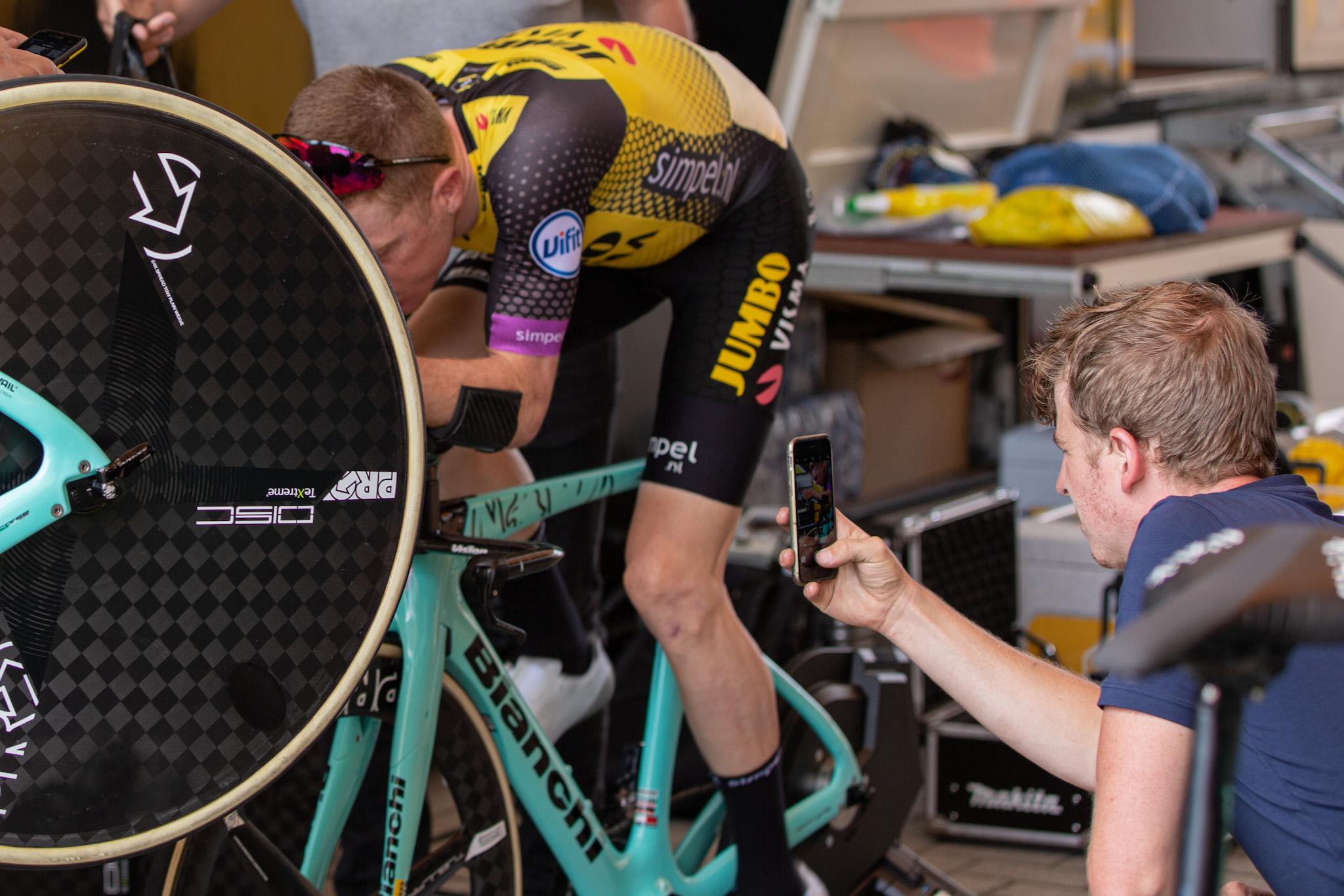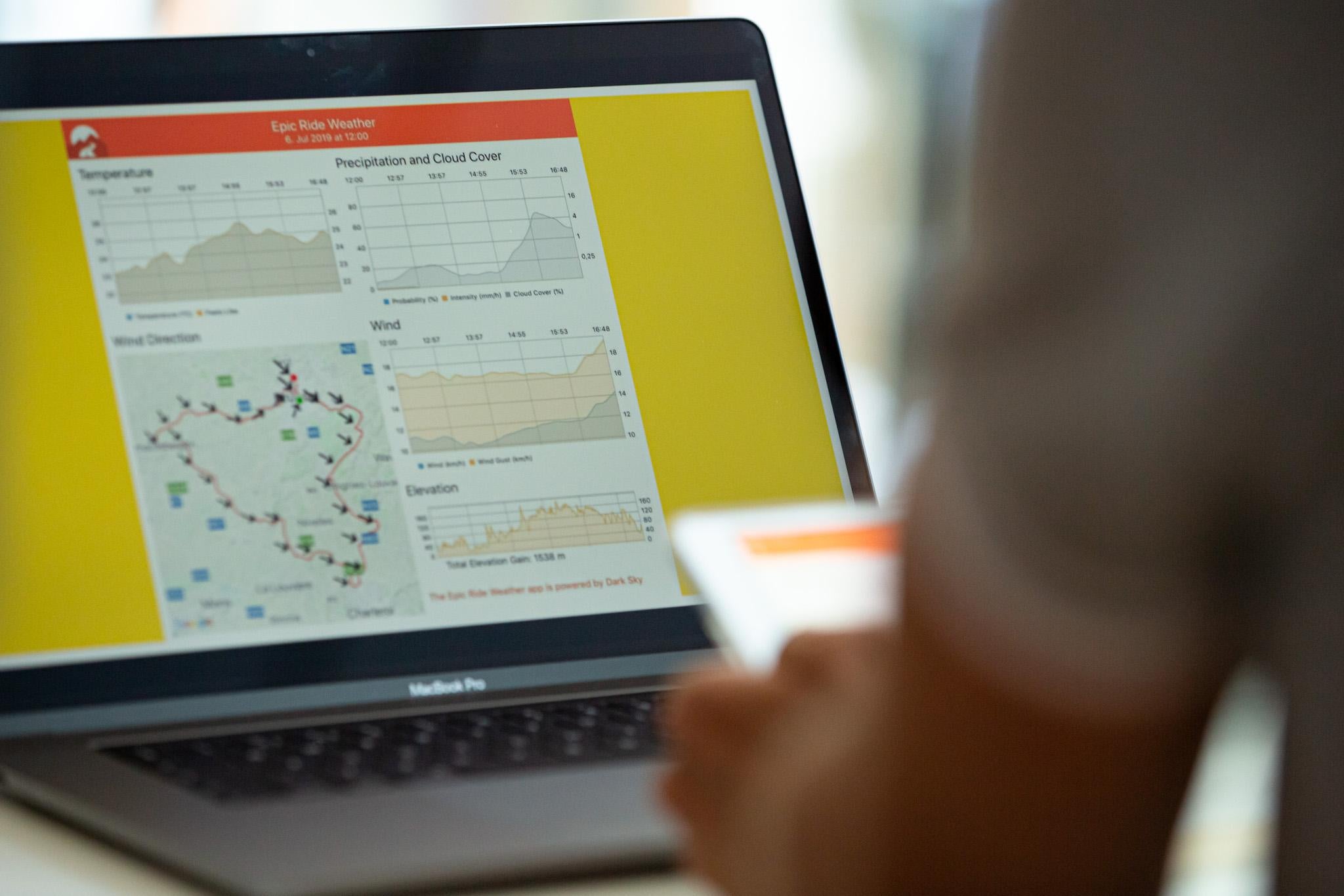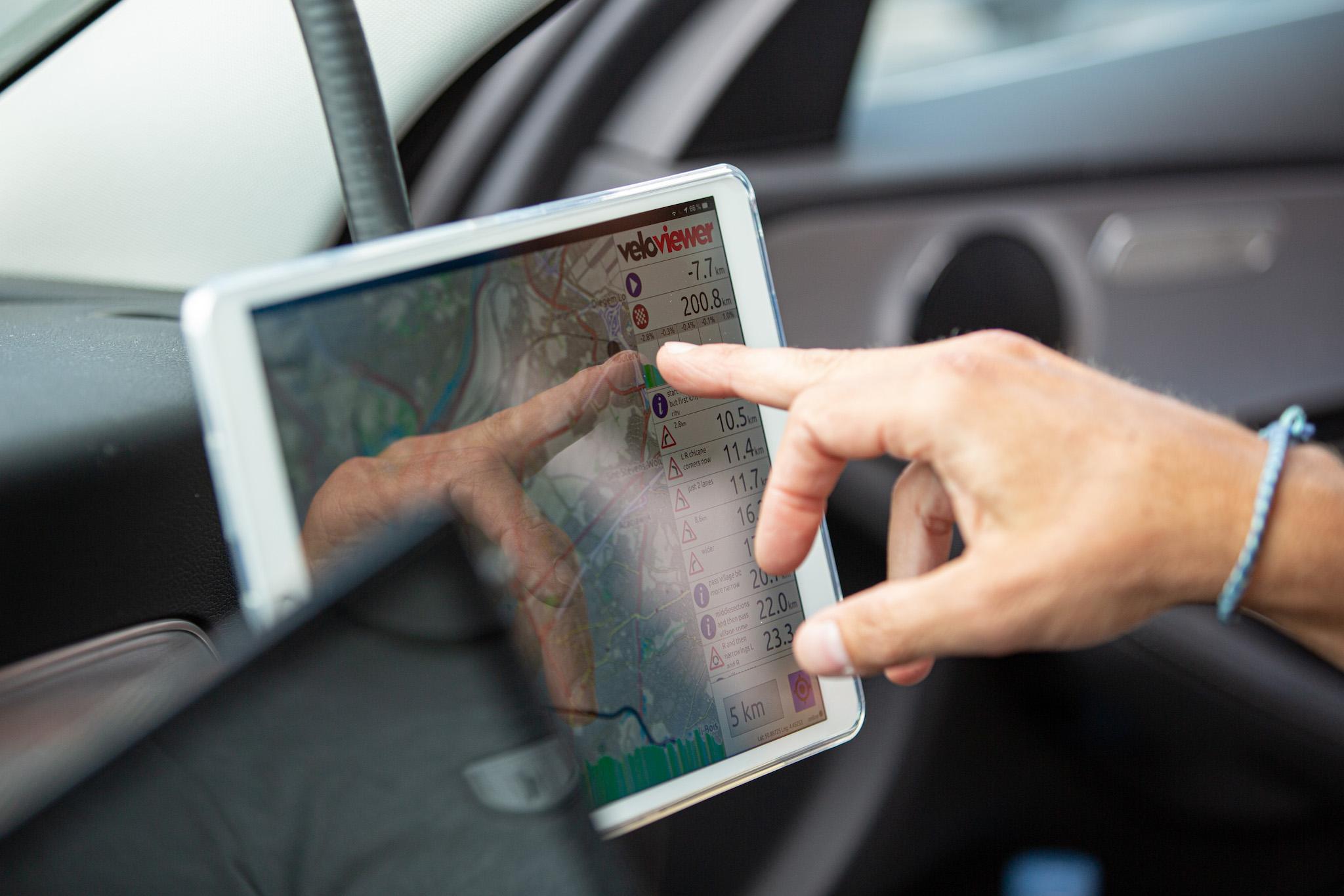Tour de France: How the technology in your iPhone and MacBook is powering the world’s most elite cyclists
Apps aren't so much what decides who wins but who loses

Your support helps us to tell the story
From reproductive rights to climate change to Big Tech, The Independent is on the ground when the story is developing. Whether it's investigating the financials of Elon Musk's pro-Trump PAC or producing our latest documentary, 'The A Word', which shines a light on the American women fighting for reproductive rights, we know how important it is to parse out the facts from the messaging.
At such a critical moment in US history, we need reporters on the ground. Your donation allows us to keep sending journalists to speak to both sides of the story.
The Independent is trusted by Americans across the entire political spectrum. And unlike many other quality news outlets, we choose not to lock Americans out of our reporting and analysis with paywalls. We believe quality journalism should be available to everyone, paid for by those who can afford it.
Your support makes all the difference.When Wout van Aert starts cycling as part of Tour de France team Jumbo-Visma, it's not just his wheels that start whirring.
Behind, in a follow car, his coaches are watching an iPad that is also busily spinning up so that it can provide data. In front of him is a small unit that shows that information so he knows where he's going.
In the future, all of that data will be pored through to understand every pedal and every turn, and how they can be quicker. But that performance was really decided long in the past, in a nutrition and training schedule that is managed with rigorous exactitude using the latest technology.
The races are won on the strength of the athletes legs, on their preternatural prowess at spinning their legs around. But they can be lost here, in the technology that decides how everything else will go.
Every day, multiple times, Van Aert and his teammates receive a food menu on their iPhones, controlled by a nutritionist who pushes it to them from a MacBook. Opening up a special app made for the team, they can see everything they're about to eat, before it's cooked for them by experts who – for the length of the Tour – follow them around in a travelling kitchen that in turn is followed by a refrigerated van full of ingredients.
It might sound lavish, like Deliveroo without the anxiety of choice. But it is far from it: every single item on that menu, every single ingredient used to make it, is counted out in precise detail.
On that nutritionist's laptop is a complicated app, which takes in data about how much work the cyclists have done and will do, and calculates how much they need to eat. It breaks food down to its specific purposes for the riders – telling them exactly how much carbohydrates they need, for instance.
They can ask for more food – they could even put in a request for sweets, if they wished. But that would be calculated in that same spreadsheet, made up for somewhere else, with a knock-on effect that they will see on their phone when the menu pops back up the next day.

The impression is that the cyclists are something like monks. They are given precise amounts of food, which is calculated to be as utilitarian as possible; where they go is defined by strict and exacting tablets that in some ways know more about them than they know themselves; they spend their days with heads bowed, focused specifically on one special goal.
The same precision is, of course, applied to actually getting around the course. The same technology-powered precision, the same sets of iPads and apps, also map out that route to ensure that the cyclists are well-oriented in addition to being well-fed.
Months before the tour, Jumbo-Visma coach Grischa Niermann sits down at a MacBook and starts poring through information about where the riders will eventually be going. His laptop is a flurry of maps and photos, detailing every twist and turn, every possible threat and opportunity.
He works methodically with an app called VeloViewer, used by many of the world's elite cycling teams. It takes all of the information about the route but allows Niermann and his competitors to layer their own data on top of it: he can mark out every moment that will matter, from dangerous turns to cobbled streets, from claustrophobic villages to howling open paths.
Nowadays, the Tour de France sends information about the routes out not only in the traditional printed form, but also as a GPX file that can be loaded up on any compatible cycling kit, from the head unit that sits on a leisurely cyclists' bike to Niermann's all-important MacBook. He is able to stick those files into a computer, and have a detailed route on where all the cyclists will be going.
But everyone has the route – what makes the difference is what they do with it. And so he gets to work with those annotations, trying to anticipate the points that will be difficult or easy, the ones at which he will have to give precise instructions to riders through their headsets and the ones at which the pressure of the race will be so much that even breathing a word into their helmet could damage their performance.
To help envision that, VeloViewer pulls in a host of data from Google Maps that means coaches can whizz through the course on a virtual ride, using Street View data to see what it might look like. Other apps add to that same ability to virtually run the course: one called Epic Ride Weather can take the mapping route, add information about when the race will start and the kind of speed cyclists will be going, and try and work out exactly how windy, wet and cold it will be.

When that is done, it is shunted out into an iPad, which is then taken to the follow car and stuck onto the inside of its windscreen. It becomes a vital guide for Niermann, who can track the route as they drive and ride, calling out coaching and encouragement as the cyclists make their way through the course.

In other races – though not in the Tour de France – coaches are given a library of live information about their riders: where they are, and how many watts their pedalling is generating.
Niermann notes that it is difficult to use this to coach too precisely. None of the data on their watts is accurate or clear enough to be relied on all the time, and besides it only gives a very limited picture of how the cyclists are feeling.
But it can be useful in knowing how to coach the riders. "If you can see somebody's already hurting a lot, you can make your conclusions: maybe he's having a bad day, or he's not going to win today," he tells The Independent.
At other times it might simply be a guide to the kind of coaching required. You might be able to make a joke "when it's going easy and everybody is kind of relaxed," he says, "but if you see they are really hurting then you know it's not the moment".
It's a reminder how much of the fight is psychological – so while technology could be useful, using too much of it can get in the way. The cyclists themselves don't necessarily get all of the in-depth data that Niermann is looking at as they're racing, even though it is about them.
Where Niermann has a big iPad, the cyclists have much smaller head units, which also show a much smaller amount of information. Coaches might see the precise undulations of a course, for instance; the cyclists might only see how many kilometres they have left to climb.
Those same head units are available to cyclists at home, too – though of course they'll have to get the routes and plan them out themselves. Companies like Wahoo and Garmin make devoted cycling head units that show similar kinds of information.
Just as the cyclists' hard work is handed over to a man and an iPad, the head units can hand off their work to iPhones or computers.
"Using a bike computer shouldn't be the hardest part of your ride," says Rowley Clifford, UK marketing manager at Wahoo. "It should be one of these things that just works."
So Wahoo's Element cycle computers grew out of the fact "everyone carries these amazing phones and computers around in the pocket with them", he says, and allowed them to decide to "move the majority of the computing power into your smartphone".
Just as with Niermann and the professional cyclists, Clifford and Wahoo are clear that the point isn't for technology to get in the way, but to improve your riding after. It might not be important to know precisely how many watts you are putting out at any one time – but by looking through that information on your computer after the fact, it can help ensure that you output more next time.
If you want to replicate some of the same cycling experience but don't even want to go outside, iPads can help you do that too. You're not going to be allowed onto the real Tour de France course, most likely, but you can at least get into a virtual version of the same thing.
iPads and tablets can do that not by showing the real route with real riders, as VeloViewer does in the cars of Jumbo-Visma and other teams. Instead, they can show a simulated course, allowing you to do some of the same thing at home.
That's done with apps such as Zwift, which runs on your computer or tablet. It plugs into a piece of kit called a smart trainer, which replaces the wheel on your bike and so lets you cycle on the spot, with all of your efforts going into the machine rather than the floor.
Stuck together, the Zwift app can take your real performance and put it into a virtual world. That means, for instance, that you can cycle the Giro d'Italia just as the actual pro cyclists do – except you never leave your living room, watching your journey around the course on your iPad screen.
The data generated can be obsession-inducing. Niermann notes that it is "endless" – that he could be tempted to spend yet more hours poring through all of that information, but that could never end.
And whether it is your own training or the training done by the world's best cyclists, all of that could what makes you succeed – or fail.
"It's a little bit like it's not that we have a really big advantage because we're using it," says Niermann. "It's that you have a big disadvantage if you don't."
Join our commenting forum
Join thought-provoking conversations, follow other Independent readers and see their replies
Comments